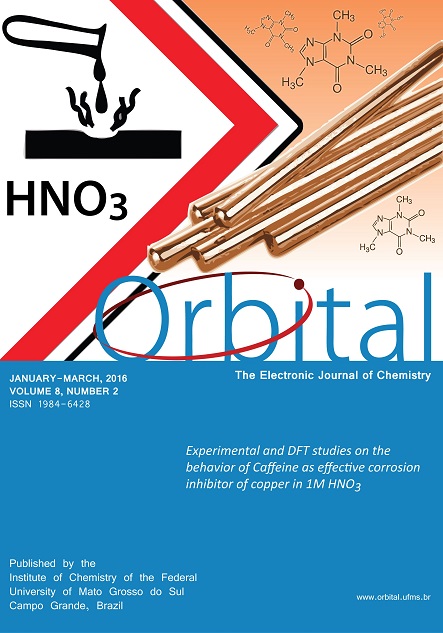Um Estudo Qualitativo por Espectroscopia de Fluorescência e por Termogravimetria de uma Resina de Nanopartículas: Uma Avaliação do Efeito de Diferentes Fontes de Luz
- nanopartícula,
- fluorescência,
- termogravimetria,
- polimerização
Copyright (c) 2016 Orbital: The Electronic Journal of Chemistry

This work is licensed under a Creative Commons Attribution-NonCommercial-NoDerivatives 4.0 International License.
Abstract
The objective of this study was to qualitatively analyze the polymerization of a nanoparticle resin; the method used combined a fluorescence spectroscopy technique with the use of Rhodamine dye. For comparative purposes, differential scanning calorimetry (DSC) and thermogravimetric analysis (TG/DTG) were also used. The nanoparticle resin used in this study was the commercial resin Filtek Supreme. To evaluate susceptibility to the effect of various source activations, a halogen lamp, a LED lamp and an argon laser were used. To compare three light sources, the same wavelength was applied using each device for the same exposure time. The fluorescence intensity values were lower over the first millimeters with the use of the halogen lamp because the Rhodamine dye was less diffused in those samples, indicating a higher degree of polymerization. The highest fluorescence intensity values were observed in the group that was polymerized using the argon laser, indicating that the dye was more diffused in those samples due to a lower degree of polymerization.

